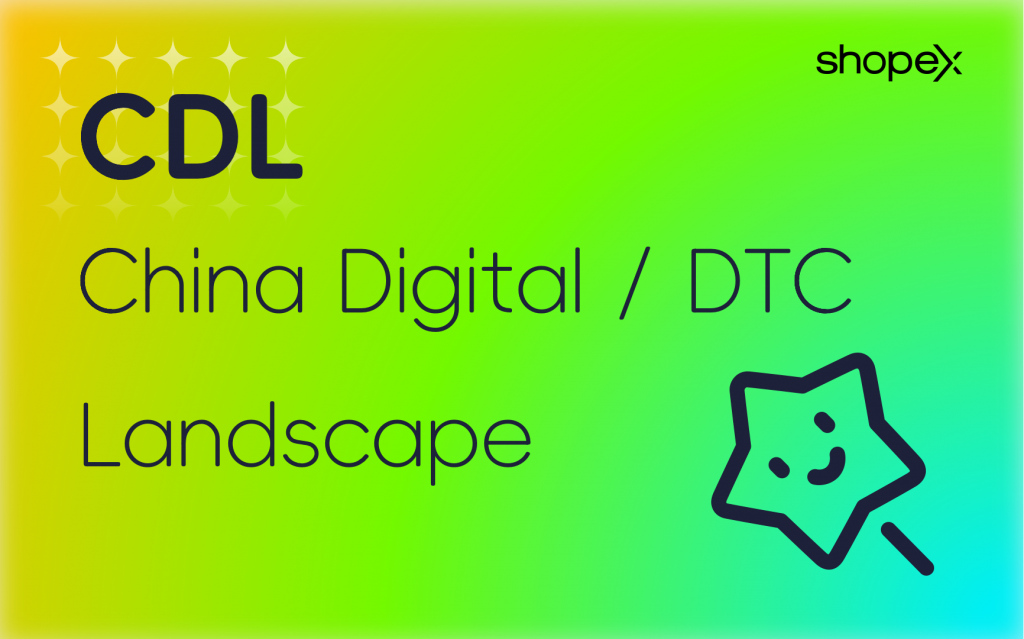
The “CDL Landscape” summarizes and analyzes the nine modules of “CONSUMER, GOODS, CHANNEL, RIGHTS, OWNERSHIP, INTERESTS, FINANCE, TAXATION, LAW” from three aspects: business operation, business collaboration, and business compliance.
It also analyzes the pain points and digital transformation needs of many internationally renowned brands when transitioning from B2B business to DTC business.
(1) Business Operation: The core essence of the DTC model lies in analyzing the comprehensive needs of consumers (people), products (goods), and the shopping experience (channel), establishing both online and offline touchpoints that directly reach consumers. By accurately and promptly meeting consumers’ personalized needs, a virtuous cycle of diffusive positive feedback can be achieved.
(2) Business Collaboration: DTC represents a transformation of business models and business concepts. It requires the collaborative expansion of all relevant internal departments of the brand and the external ecosystem of the brand, such as operation service providers and distributors, to be smoothly promoted. During the process of business collaboration, the distribution of interests and the redesign of the interest system should be fully considered.
(3) Business Compliance: For brand owners, the innovation and practice of business models need to be based on the foundation of legality and compliance. Under the increasingly diverse retail scenario models, brands should pay attention to the financial, legal, and tax compliance of new businesses.
ShopeX is the first service provider in the industry that fully integrates the nine modules involved in omnichannel retail business, namely “CONSUMER, GOODS, CHANNEL, RIGHTS, OWNERSHIP, INTERESTS, FINANCE, TAXATION, LAW”, to interpret the Chinese retail digital blueprint. This also reflects the rich experience and comprehensive understanding accumulated by ShopEx during its service to global leading brands.
ShopeX believes that all the above theories will ultimately focus on the capabilities of enterprises in two aspects, namely “omnichannel reach capabilities” and “digital capabilities”.
(1) Omnichannel Reach Capabilities: It means getting infinitely close to consumers through innovative business models. For example, the reach capabilities of online e-commerce platforms, the reach capabilities of brand official websites; the integrated online-offline reach capabilities of enterprises, the collaborative reach capabilities between brands and distributors; and the ability to establish regional instant reach.
(2) Digital Capabilities: It refers to enhancing the operation capabilities facing consumers through digital construction. For example, enterprises should have the ability to manage inventory across all channels, the ability to quickly fulfill supply chain orders, and the ability to monitor logistics for both online and offline scenarios as well as multiple stores and warehouses.
In addition, it also includes the ability to reallocate the interests of business roles and the ability to uniformly operate omnichannel members.
When conducting omnichannel retail business in China, it is necessary to comprehensively consider the nine modules of “CONSUMER, GOODS, CHANNEL, RIGHTS, OWNERSHIP, INTERESTS, FINANCE, TAXATION, LAW” to make business innovation and collaboration more efficient.

商派官方订阅号

领取相关报告
近期文章
- 收购德国狼爪,建立全球多品牌帝国!安踏集团多品牌战略与DTC战略深度解析
- 安踏集团宣布将以 2.9 亿美元收购德国户外品牌狼爪(Jack Wolfskin)
- TikTok 重塑商业:开启购物新时代
- 商派会员经营门户与商派积分平台:重构企业会员生态的数字化引擎 ——全链路闭环、精准运营与跨业态增长
- AI智能体生态革命:谷歌A2A协议如何重塑未来十年? ——当“安卓模式”撞上AI Agent,一场没有硝烟的战争开始了
- 美宜佳—中国最牛的便利店超市,摘得《哈佛商业评论》“年度卓越管理奖”
- 法国市场3月增速超标,欧洲外贸市场井喷:AI重构全球贸易格局,中国商家如何抓住“非线性增长”红利?
- 商派品牌客户—无线麦克风第一品牌「MOMA猛玛」小程序商城上线!


 沪公网安备 31010402000102号
沪公网安备 31010402000102号
 电子营业执照
电子营业执照